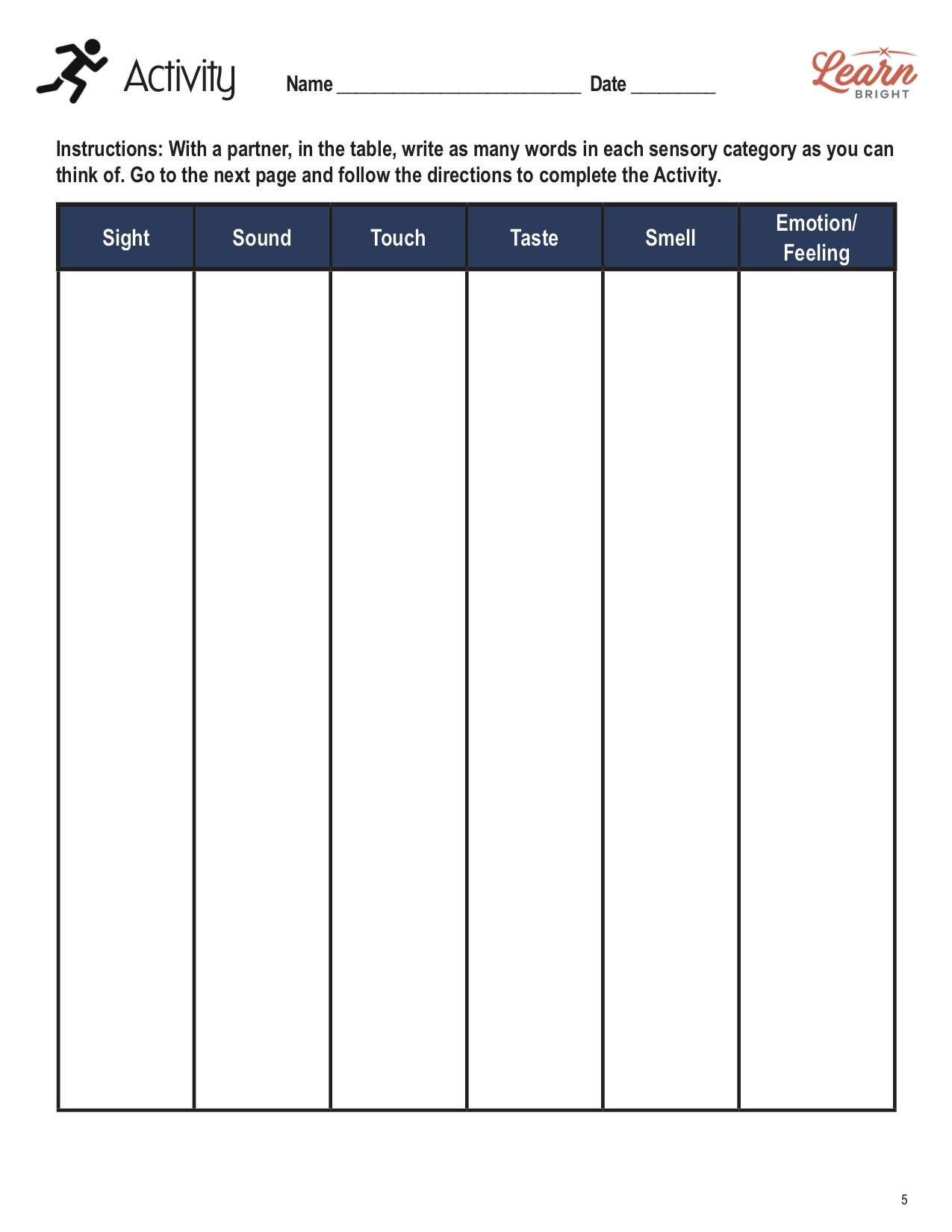Description
What our Narrative Writing – Sensory Language lesson plan includes
Lesson Objectives and Overview: Narrative Writing – Sensory Language teaches students about sensory words and how they enhance writing. Students will learn how to use these words and details to write better and engage readers. They will discover how important it is to use sensory language in narrative writing. Additionally, the lesson will describe how to use a thesaurus.
Two content pages outline the lesson material. The lesson begins with a short story that describes a teacher who makes writing fun for her students. The lesson displays a chart that contains sensory detail words that students could use to describe different senses. Examples include bleary, bitter, glossy, dazzling, squeal tarnished, and peppery. Students can see how these words do a better job at painting a picture than simple words like shiny or dull.
The lesson presents another short story to present the concept of using a thesaurus to replace common words with more descriptive ones. Students will practice using sensory words in place of less descriptive words through a couple exercises. They will easily recognize how this type of language makes writing more interesting and flavorful.
SENSORY WORDS ACTIVITY
Students will work with a partner for the activity. The worksheet displays a table with six columns. Each column represents a different sense, except for the last column, which is emotion or feeling. Students will write as many words as they can for each column. Then they will look at the table on the next worksheet page. They will choose two words from each column and write them down. Finally, they will use a thesaurus and write as many synonyms as they can for the original words.
USE A THESAURUS PRACTICE WORKSHEET
The practice worksheet will pull from the activity. Students will choose a sensory word from each column of their first activity page. Next they will write a sentence that includes those words. Then they write the same sentence but use a synonym to make it more interesting.
NARRATIVE WRITING – SENSORY LANGUAGE HOMEWORK ASSIGNMENT
For the homework worksheet, students will test their ability to recognize the sense that corresponds to a word. There are two columns of sensory words. Students will write the sensory category that the word represents. The sensory categories are sight, sound, touch, taste, smell, and emotion.









